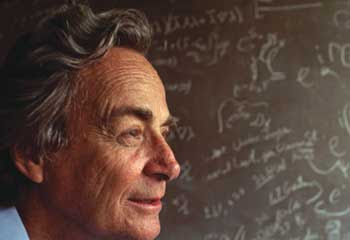 The image is of Ananda, the cousin and disciple of Gautam Buddha. He was at Buddha's side constantly, attending to his every need for forty-two years. When Buddha died, the story is told that Ananda was still at his side, weeping. The other disciples chastised him for his misunderstanding: Buddha had died absolutely fulfilled; he should be rejoicing. But Ananda said, "You misunderstand. I'm weeping not for him but for myself, because for all these years I have been constantly at his side but I have still not attained." Ananda stayed awake for the whole night, meditating deeply and feeling his pain and sorrow. By the morning, it is said, he was enlightened. Times of great sorrow have the potential to be times of great transformation. But in order for transformation to happen we must go deep, to the very roots of our pain, and experience it as it is, without blame or self-pity.
The image is of Ananda, the cousin and disciple of Gautam Buddha. He was at Buddha's side constantly, attending to his every need for forty-two years. When Buddha died, the story is told that Ananda was still at his side, weeping. The other disciples chastised him for his misunderstanding: Buddha had died absolutely fulfilled; he should be rejoicing. But Ananda said, "You misunderstand. I'm weeping not for him but for myself, because for all these years I have been constantly at his side but I have still not attained." Ananda stayed awake for the whole night, meditating deeply and feeling his pain and sorrow. By the morning, it is said, he was enlightened. Times of great sorrow have the potential to be times of great transformation. But in order for transformation to happen we must go deep, to the very roots of our pain, and experience it as it is, without blame or self-pity.
This pain is not to make you sad, remember. That's where people go on missing.... This pain is just to make you more alert--because people become alert only when the arrow goes deep into their heart and wounds them. Otherwise they don't become alert. When life is easy, comfortable, convenient, who cares? Who bothers to become alert? When a friend dies, there is a possibility. When your woman leaves you alone--those dark nights, you are lonely. You have loved that woman so much and you have staked all, and then suddenly one day she is gone. Crying in your loneliness, those are the occasions when, if you use them, you can become aware. The arrow is hurting: it can be used. The pain is not to make you miserable, the pain is to make you more aware! And when you are aware, misery disappears.


 The image is of Ananda, the cousin and disciple of Gautam Buddha. He was at Buddha's side constantly, attending to his every need for forty-two years. When Buddha died, the story is told that Ananda was still at his side, weeping. The other disciples chastised him for his misunderstanding: Buddha had died absolutely fulfilled; he should be rejoicing. But Ananda said, "You misunderstand. I'm weeping not for him but for myself, because for all these years I have been constantly at his side but I have still not attained." Ananda stayed awake for the whole night, meditating deeply and feeling his pain and sorrow. By the morning, it is said, he was enlightened. Times of great sorrow have the potential to be times of great transformation. But in order for transformation to happen we must go deep, to the very roots of our pain, and experience it as it is, without blame or self-pity.
The image is of Ananda, the cousin and disciple of Gautam Buddha. He was at Buddha's side constantly, attending to his every need for forty-two years. When Buddha died, the story is told that Ananda was still at his side, weeping. The other disciples chastised him for his misunderstanding: Buddha had died absolutely fulfilled; he should be rejoicing. But Ananda said, "You misunderstand. I'm weeping not for him but for myself, because for all these years I have been constantly at his side but I have still not attained." Ananda stayed awake for the whole night, meditating deeply and feeling his pain and sorrow. By the morning, it is said, he was enlightened. Times of great sorrow have the potential to be times of great transformation. But in order for transformation to happen we must go deep, to the very roots of our pain, and experience it as it is, without blame or self-pity. The particles are represented by lines that may be of various kinds depending on the type of particle they are associated. A point where the lines intersect is called the interaction point, or just the top. The lines are divided into three categories: internal lines (which connect two vertices), incoming lines (which come from the past and come into a vertex and representing the originally non-interacting) and outgoing lines (which start at a vertex and extend "the future" and the final states are not interacting). Sometimes the tables are turned and the past is down, and the future high.
The particles are represented by lines that may be of various kinds depending on the type of particle they are associated. A point where the lines intersect is called the interaction point, or just the top. The lines are divided into three categories: internal lines (which connect two vertices), incoming lines (which come from the past and come into a vertex and representing the originally non-interacting) and outgoing lines (which start at a vertex and extend "the future" and the final states are not interacting). Sometimes the tables are turned and the past is down, and the future high.

 In these diagrams, for example an electron in an electromagnetic field (continuous double line) may have the following behaviors: (a) emits and absorbs a virtual photon (wavy line) ;(b) emits and absorbs a virtual electron-positron pair (double circle ); (c) emits a photon and immediately after another, with an overlap in time; (d) where the virtual electron-positron pair is emitted electron emits a virtual photon is absorbed.
In these diagrams, for example an electron in an electromagnetic field (continuous double line) may have the following behaviors: (a) emits and absorbs a virtual photon (wavy line) ;(b) emits and absorbs a virtual electron-positron pair (double circle ); (c) emits a photon and immediately after another, with an overlap in time; (d) where the virtual electron-positron pair is emitted electron emits a virtual photon is absorbed.




